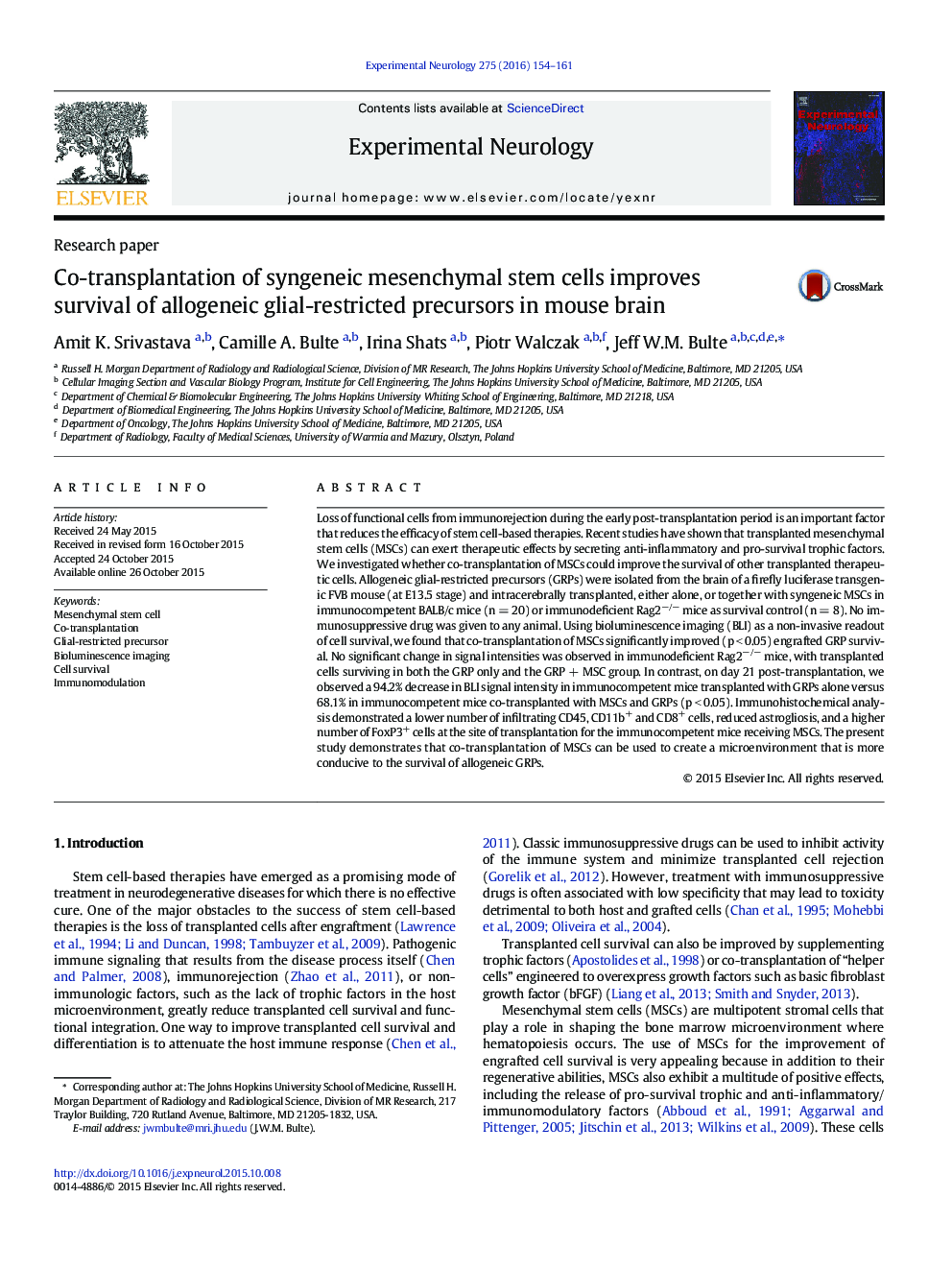| کد مقاله | کد نشریه | سال انتشار | مقاله انگلیسی | نسخه تمام متن |
|---|---|---|---|---|
| 3055363 | 1186481 | 2016 | 8 صفحه PDF | دانلود رایگان |
• Bioluminescence imaging is well suited to serially monitor transplanted cell survival.
• Allogeneic GRPs exhibit improved cell survival when co-transplanted with syngeneic MSCs.
• This beneficial effect of MSCs is manifested by reduced immune cell infiltration and reduced astrogliosis.
Loss of functional cells from immunorejection during the early post-transplantation period is an important factor that reduces the efficacy of stem cell-based therapies. Recent studies have shown that transplanted mesenchymal stem cells (MSCs) can exert therapeutic effects by secreting anti-inflammatory and pro-survival trophic factors. We investigated whether co-transplantation of MSCs could improve the survival of other transplanted therapeutic cells. Allogeneic glial-restricted precursors (GRPs) were isolated from the brain of a firefly luciferase transgenic FVB mouse (at E13.5 stage) and intracerebrally transplanted, either alone, or together with syngeneic MSCs in immunocompetent BALB/c mice (n = 20) or immunodeficient Rag2−/− mice as survival control (n = 8). No immunosuppressive drug was given to any animal. Using bioluminescence imaging (BLI) as a non-invasive readout of cell survival, we found that co-transplantation of MSCs significantly improved (p < 0.05) engrafted GRP survival. No significant change in signal intensities was observed in immunodeficient Rag2−/− mice, with transplanted cells surviving in both the GRP only and the GRP + MSC group. In contrast, on day 21 post-transplantation, we observed a 94.2% decrease in BLI signal intensity in immunocompetent mice transplanted with GRPs alone versus 68.1% in immunocompetent mice co-transplanted with MSCs and GRPs (p < 0.05). Immunohistochemical analysis demonstrated a lower number of infiltrating CD45, CD11b+ and CD8+ cells, reduced astrogliosis, and a higher number of FoxP3+ cells at the site of transplantation for the immunocompetent mice receiving MSCs. The present study demonstrates that co-transplantation of MSCs can be used to create a microenvironment that is more conducive to the survival of allogeneic GRPs.
Journal: Experimental Neurology - Volume 275, Part 1, January 2016, Pages 154–161
